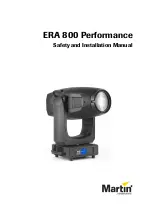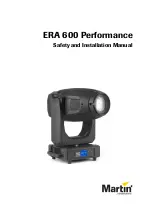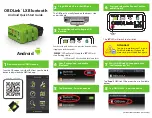
Configuring the CTC II
An overview of the “Service” menu parameters
26
• Edition 01/2
009
Program
Range of values
Remark
Communication
Bluetooth address
In accordance with the
specifications of the Bluetooth
module's manufacturer
(hexadecimal)
Input of the Roller Interface Module's Bluetooth
address; see Pos.
(1)
,
Fig. 1
on
Page 7
Connection
Bluetooth/ Serial
Setting the type of connection to the Roller
Interface Module:
•
Bluetooth: wireless communication
•
Serial: cabled communication (trailing cable)
via serial interface
Field strength
Field strength and error rate
CTC II
Field strength and error rate
Roller Interface Module
Display of the received field strength and the
error rate of the Bluetooth connection; see the
Chapter entitled “Checking field strength in the
“Service” menu”
on
Page 30
PIN mode
off/ PIN direct/ User selection
Setting the PIN mode
off
Function for entering the PIN of the workshop
card via the CTC II is switched off.
PIN direct
The workshop card PIN can be entered using
directly via the CTC II.
The PIN is not saved in the CTC II.
User selection
The workshop card PIN can be entered using
and user selection via the CTC II.
The workshop card PIN is saved in the CTC II
and protected by a 4-digit password.
Up to 10 PINs can be saved.
System
Download Language
CTC II display texts are translated into German,
English and French. To load other languages, a
text file can be transferred to the CTC II.
To do this, the CTC II must be connected to a
computer.
Clock calibration
This menu item is only required for CTC II
manufacture.
Load change-over times
You can use a data transfer cable to load
change-over times for summer and winter to the
CTC II. To do this, the CTC II must be connected
to a computer.
Calibration mode
The CTC II must be periodically calibrated by a
service technician. To do this, the CTC II must be
connected to a calibration unit.
Automatic measuring track
Manual measuring track
Variable speed
Clock – test
L-measurement














































